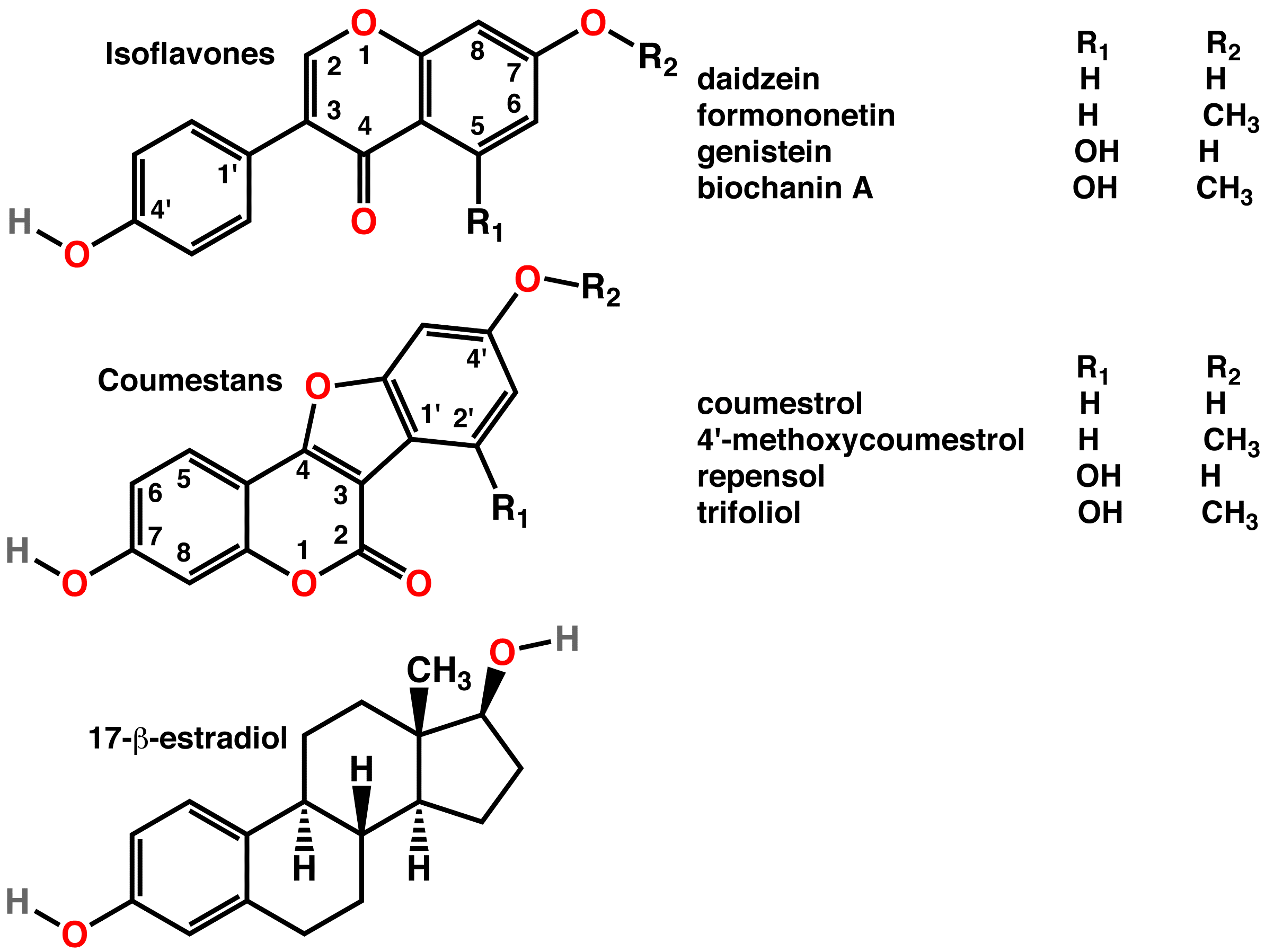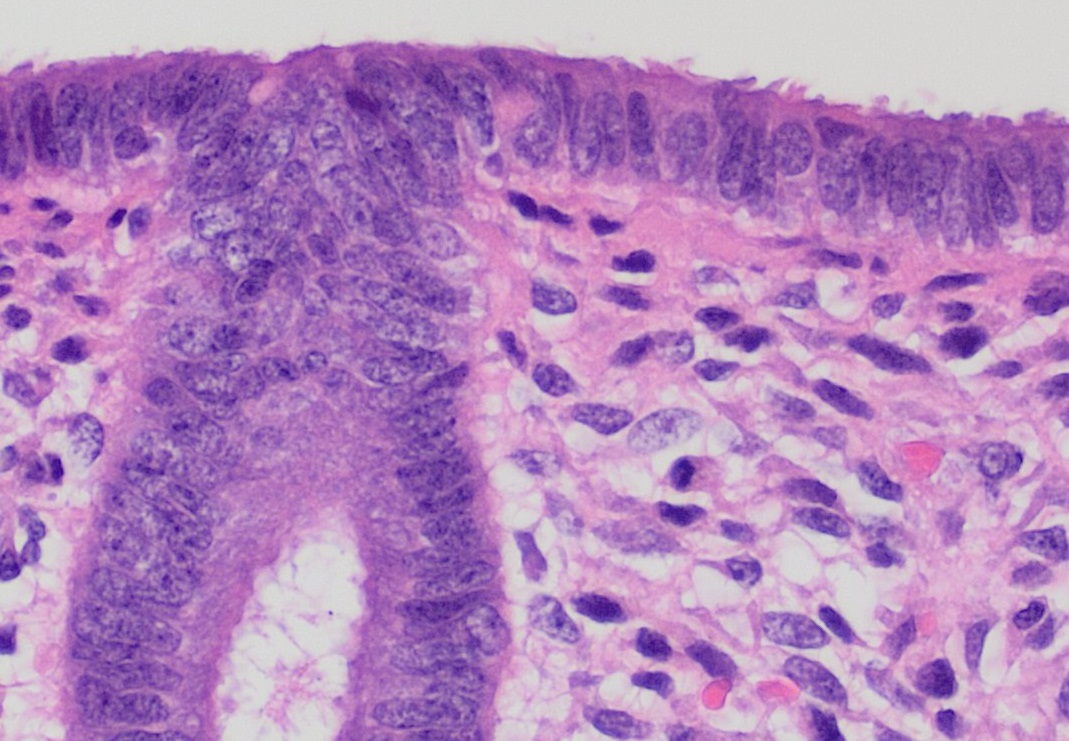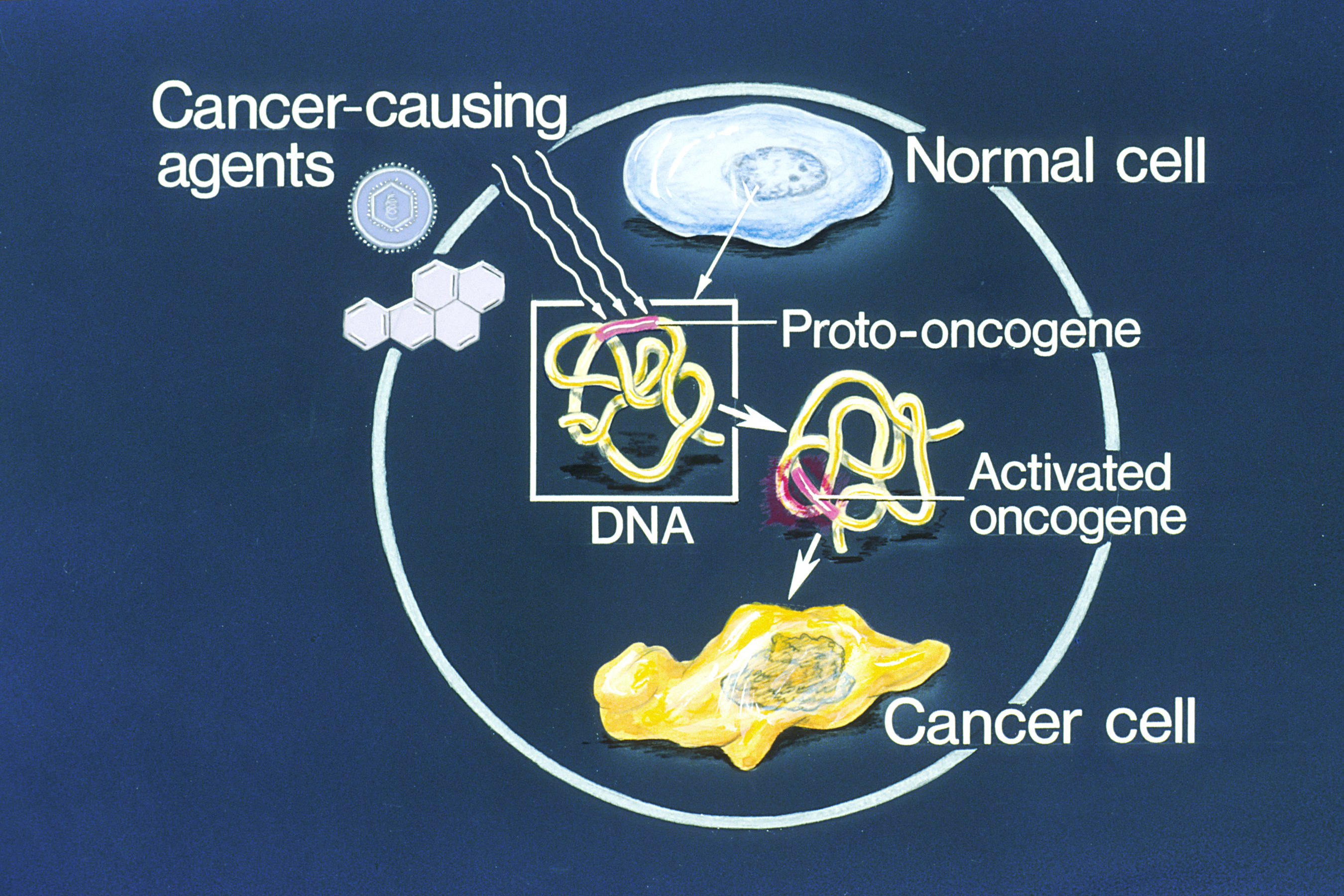|
Xenoestrogen
Xenoestrogens are a type of xenohormone that imitates estrogen. They can be either synthetic or natural chemical compounds. Synthetic xenoestrogens include some widely used industrial compounds, such as PCBs, BPA, and phthalates, which have estrogenic effects on a living organism even though they differ chemically from the estrogenic substances produced internally by the endocrine system of any organism. Natural xenoestrogens include phytoestrogens which are plant-derived xenoestrogens. Because the primary route of exposure to these compounds is by consumption of phytoestrogenic plants, they are sometimes called "dietary estrogens". Mycoestrogens, estrogenic substances from fungi, are another type of xenoestrogen that are also considered mycotoxins. Xenoestrogens are clinically significant because they can mimic the effects of endogenous estrogen and thus have been implicated in precocious puberty and other disorders of the reproductive system. Xenoestrogens include pharmac ... [...More Info...] [...Related Items...] OR: [Wikipedia] [Google] [Baidu] |
Xenohormone
Xenohormones or environmental hormones are compounds produced outside of the human body that exhibit endocrine hormone-like properties. They may be either of natural origin, such as phytoestrogens, which are derived from plants, or of synthetic origin. These compounds can cause endocrine disruption by multiple mechanisms including acting directly on hormone receptors, affecting the levels of natural hormones in the body, and by altering the expression of hormone receptors. The most commonly occurring xenohormones are xenoestrogens, which mimic the effects of estrogen. Other xenohormones include xenoandrogens (anabolic-androgenic steroids) and xenoprogesterones. Xenohormones are used for a variety of purposes including contraceptive & hormonal therapies, and agriculture. However, exposure to certain xenohormones early in childhood development can lead to a host of developmental issues including infertility, thyroid complications, and early onset of puberty. Exposure to others late ... [...More Info...] [...Related Items...] OR: [Wikipedia] [Google] [Baidu] |
Endocrine Disruptor
Endocrine disruptors, sometimes also referred to as hormonally active agents, endocrine disrupting chemicals, or endocrine disrupting compounds are chemicals that can interfere with endocrine (or hormonal) systems. These disruptions can cause numerous adverse human health outcomes, including alterations in sperm quality and fertility; abnormalities in sex organs‚ endometriosis‚ early puberty‚ altered nervous system or immune function; certain cancers; respiratory problems; metabolic issues; diabetes, obesity, or cardiovascular problems; growth, neurological and learning disabilities, and more. Found in many household and industrial products, endocrine disruptors "interfere with the synthesis, secretion, transport, binding, action, or elimination of natural hormones in the body that are responsible for development, behavior, fertility, and maintenance of homeostasis (normal cell metabolism)." Any system in the body controlled by hormones can be derailed by hormone disrupt ... [...More Info...] [...Related Items...] OR: [Wikipedia] [Google] [Baidu] |
Phytoestrogen
A phytoestrogen is a plant-derived xenoestrogen (a type of estrogen produced by organisms other than humans) not generated within the endocrine system, but consumed by eating plants or manufactured foods. Also called a "dietary estrogen", it is a diverse group of naturally occurring nonsteroidal plant compounds that, because of its structural similarity to estradiol (17-β-estradiol), have the ability to cause both estrogenic or antiestrogenic effects. Phytoestrogens are not essential nutrients because their absence from the diet does not cause a disease, nor are they known to participate in any normal biological function. Common foods containing phytoestrogens are soybeans and soy protein concentrate, miso, tempeh, and tofu. Some soy-based infant formulas manufactured with soy protein contain isoflavones. Its name comes from the Greek ''phyto'' ("plant") and ''estrogen'', the hormone which gives fertility to female mammals. The word "estrus" (Greek οίστρος) ... [...More Info...] [...Related Items...] OR: [Wikipedia] [Google] [Baidu] |
Precocious Puberty
In medicine, precocious puberty is puberty occurring at an unusually early age. In most cases, the process is normal in every aspect except the unusually early age and simply represents a variation of normal development. There is early development of secondary sex characters and gametogenesis also starts earlier. Precocious puberty is of two types: true precocious puberty and pseudoprecocious puberty. In a minority of children with precocious puberty, the early development is triggered by a disease such as a tumor or injury of the brain. Even when there is no underlying disease, unusually early puberty can have adverse effects on social behavior and psychological development (having more mature knowledge than one's peers, feeling inadequate, trying to attend and establish friendships with older people, depression). Affected children also face shorter adult height potential and possible lifelong health risks. Central precocious puberty can be treated by suppressing the pituita ... [...More Info...] [...Related Items...] OR: [Wikipedia] [Google] [Baidu] |
Estrogen
Estrogen (also spelled oestrogen in British English; see spelling differences) is a category of sex hormone responsible for the development and regulation of the female reproductive system and secondary sex characteristics. There are three major endogenous estrogens that have estrogenic hormonal activity: estrone (E1), estradiol (E2), and estriol (E3). Estradiol, an estrane, is the most potent and prevalent. Another estrogen called estetrol (E4) is produced only during pregnancy. Estrogens are synthesized in all vertebrates and some insects. Quantitatively, estrogens circulate at lower levels than androgens in both men and women. While estrogen levels are significantly lower in males than in females, estrogens nevertheless have important physiological roles in males. Like all steroid hormones, estrogens readily diffuse across the cell membrane. Once inside the cell, they bind to and activate estrogen receptors (ERs) which in turn modulate the expression of many ... [...More Info...] [...Related Items...] OR: [Wikipedia] [Google] [Baidu] |
Bisphenol A
Bisphenol A (BPA) is a chemical compound primarily used in the manufacturing of various plastics. It is a colourless solid which is Solubility, soluble in most common organic solvents, but has very poor solubility in water. BPA is produced on an industrial scale by the condensation reaction of phenol and acetone. Global production in 2022 was estimated to be in the region of 10 million tonnes. BPA's largest single application is as a co-monomer in the production of polycarbonates, which accounts for 65–70% of all BPA production. The manufacturing of epoxy resins and vinyl ester resins account for 25–30% of BPA use. The remaining 5% is used as a major component of several high-performance plastics, and as a minor additive in polyvinyl chloride (PVC), polyurethane, thermal paper, and several other materials. It is not a plasticizer, although it is often wrongly labelled as such. The health effects of BPA have been the subject of prolonged public and scientific debate. BPA is ... [...More Info...] [...Related Items...] OR: [Wikipedia] [Google] [Baidu] |
Mycoestrogen
Mycoestrogens are xenoestrogens produced by fungi. They are sometimes referred to as estrogenic mycotoxins. Some important mycoestrogens are zearalenone, zearalenol and zearalanol. Although all of these can be produced by various ''Fusarium'' species, zearalenol and zearalanol may also be produced endogenously in ruminants that have ingested zearalenone. Alpha-zearalanol is also produced semisynthetically, for veterinary use; such use is prohibited in the European Union. Mechanism of action Mycoestrogens act as agonists of the estrogen receptors, ERα and ERβ. Sources Mycoestrogens are produced by various strains of fungi, many of which fall under the genus ''Fusarium''. ''Fusarium'' fungi are filamentous fungi that are found in the soil and are associated with plants and some crops, especially cereals. Zearalenone is mainly produced by ''F. graminearum'' and ''F. culmorum'' strains, which inhabit different areas depending on temperature and humidity. ''F. graminearum'' pre ... [...More Info...] [...Related Items...] OR: [Wikipedia] [Google] [Baidu] |
Ethinylestradiol
Ethinylestradiol (EE) is an estrogen medication which is used widely in birth control pills in combination with progestins. Ethinylestradiol was widely used for various indications such as the treatment of menopausal symptoms, gynecological disorders, and certain hormone-sensitive cancers. It is usually taken by mouth but is also used as a patch and vaginal ring. The general side effects of ethinylestradiol include breast tenderness and enlargement, headache, fluid retention, and nausea among others. In males, ethinylestradiol can additionally cause breast development, feminization in general, hypogonadism, and sexual dysfunction. Rare but serious side effects include blood clots, liver damage, and cancer of the uterus. Ethinylestradiol is an estrogen, or an agonist of the estrogen receptors, the biological target of estrogens like estradiol. It is a synthetic derivative of estradiol, a natural estrogen, and differs from it in various ways. Compared to estradiol, e ... [...More Info...] [...Related Items...] OR: [Wikipedia] [Google] [Baidu] |
Endometrium
The endometrium is the inner epithelium, epithelial layer, along with its mucous membrane, of the mammalian uterus. It has a basal layer and a functional layer: the basal layer contains stem cells which regenerate the functional layer. The functional layer thickens and then is shed during menstruation in humans and some other mammals, including other apes, Old World monkeys, some species of bat, the elephant shrew and the Cairo spiny mouse. In most other mammals, the endometrium is reabsorbed in the estrous cycle. During pregnancy, the glands and blood vessels in the endometrium further increase in size and number. Vascular spaces fuse and become interconnected, forming the placenta, which supplies oxygen and nutrition to the embryo and fetus.Blue Histology - Female Reproductive System ... [...More Info...] [...Related Items...] OR: [Wikipedia] [Google] [Baidu] |
Endometriosis
Endometriosis is a disease in which Tissue (biology), tissue similar to the endometrium, the lining of the uterus, grows in other places in the body, outside the uterus. It occurs in women and a limited number of other female mammals. Endometrial tissue most often grows on or around reproductive organs such as the ovaries and fallopian tubes, on the outside surface of the uterus, or the tissues surrounding the uterus and the ovaries (peritoneum). It can also grow on other organs in the pelvic region like the Gastrointestinal tract, bowels, stomach, bladder, or the cervix. Rarely, it can also occur in other parts of the body. Symptoms can be very different from person to person, varying in range and intensity. About 25% of individuals have no symptoms, while for some it can be a debilitating disease. Common symptoms include pelvic pain, Heavy menstrual bleeding, heavy and Dysmenorrhea, painful periods, pain with bowel movements, Dysuria, painful urination, Dyspareunia, pain dur ... [...More Info...] [...Related Items...] OR: [Wikipedia] [Google] [Baidu] |
Adenomyosis
Adenomyosis is a medical condition characterized by the growth of cells that proliferate on the inside of the uterus (endometrium) atypically located among the cells of the uterine wall (myometrium), as a result, thickening of the uterus occurs. As well as being misplaced in patients with this condition, endometrial tissue is completely functional. The tissue thickens, sheds and bleeds during every menstrual cycle. The condition is typically found in women between the ages of 35 and 50, but also affects younger women. Patients with adenomyosis often present with painful menses (dysmenorrhea), profuse menses (menorrhagia), or both. Other possible symptoms are dyspareunia, pain during sexual intercourse, chronic pelvic pain and irritation of the urinary bladder. In adenomyosis, ''basal'' endometrium penetrates into hyperplastic myometrial fibers. Unlike the functional layer, the basal layer does not undergo typical cyclic changes with the menstrual cycle. Adenomyosis may involve th ... [...More Info...] [...Related Items...] OR: [Wikipedia] [Google] [Baidu] |
Oncogene
An oncogene is a gene that has the potential to cause cancer. In tumor cells, these genes are often mutated, or expressed at high levels.Kimball's Biology Pages. "Oncogenes" Free full text Most normal cells undergo a preprogrammed rapid cell death () if critical functions are altered and then malfunction. Activated oncogenes can cause those cells designated for apoptosis to survive and proliferate instead. Most oncogenes began as proto-oncogenes: normal genes involved in cell growth and proliferation or inhibition of apoptosis. If, through mutation, normal genes promoting cellular growth are up-regulated (gain-of-function mutation), they predispose the cel ... [...More Info...] [...Related Items...] OR: [Wikipedia] [Google] [Baidu] |






